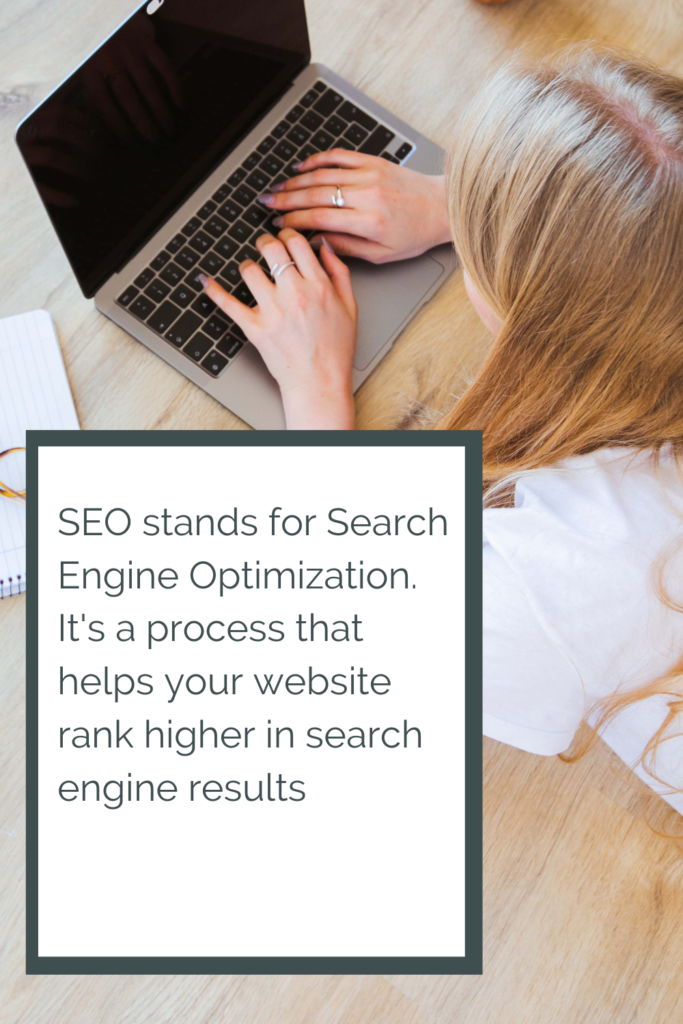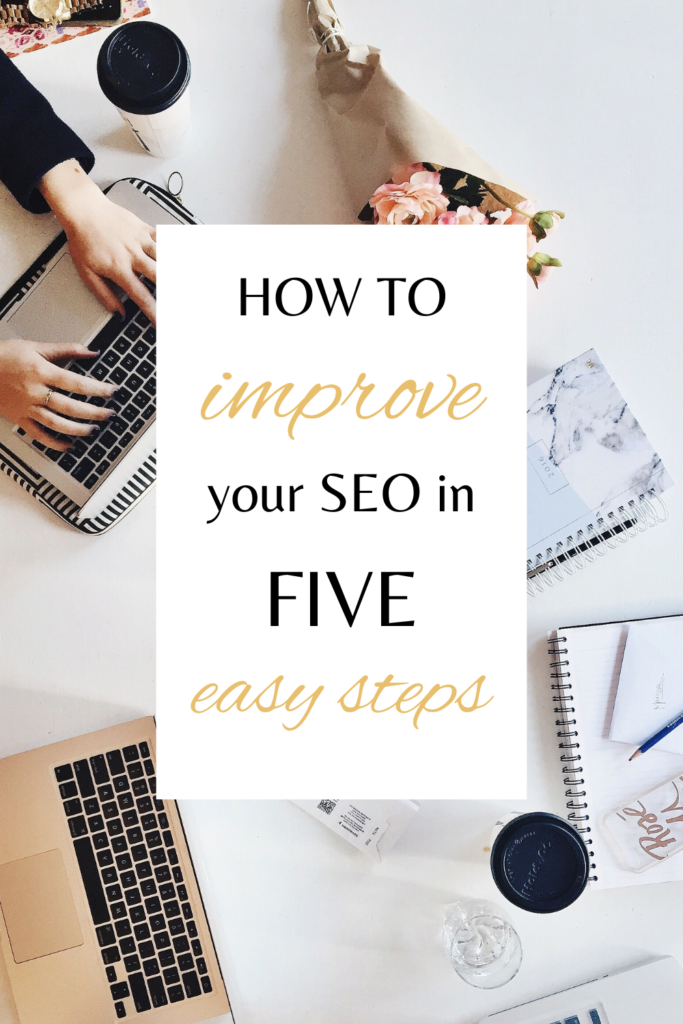It’s time to get started with your on-page optimization & SEO blog writing!
It can be hard to know where to start if you’re a beginner. But don’t worry—we’ve got everything you need to know about on-page optimization right here.
This guide will cover the basics of on-page optimization, including how Google looks at your site and what it takes for them to rank it well. We’ll also go over some of the most common problems that keep bloggers from ranking well and how you can fix them in our coming blog posts.
Ready? Let’s dive in!
SEO blog writing might seem complex and confusing if you’re a beginner. But it doesn’t have to be!
What is SEO?
SEO stands for Search Engine Optimization. It’s a process that helps your website rank higher in search engine results, which means more people see it. SEO is worth learning about if you want more customers and those customers to be more likely to buy from you.

What is SEO blog writing?
SEO blog writing is all about optimizing the content that’s already on your site so that it ranks higher in search engines like Google. The more relevant keywords you have on your page, and the better they’re optimized, the more likely people will be to find your page when they search for those keywords. This means more traffic and more leads for your business.
The best way to understand on-page optimization is by looking at an example. Let’s say you run a blog about pet care tips for dogs. You want to rank as high as possible for “pet care tips,” but another keyword phrase gets searched quite often: “dog training tips.” To optimize both pages, you’ll want to include both keywords in the title tag (the text appearing at the top of each browser window) and meta description.
What is On-Page Optimization?
On-page optimization refers to all of the things that happen on your website that are directly related to search engine optimization (SEO). These include things like having the right meta tags, using keywords in your title tags and body text, using appropriate anchor text in links, and more.
SEO blog writing Benefits?
Think of it this way: your website is like a house; the words you write are the furniture in your home. You wouldn’t put the couch right in front of the door, would you? You’d want people to be able to find their way around easily—and so does Google! By optimizing your content and through SEO blog writing, you’re making sure search engines can see everything clearly without getting lost in all sorts of clutter.
Why should you care about on-page Optimization?
When someone types a query into Google, they’re looking for information. Every search engine wants to show the most relevant results to their users, which means they need to be able to tell what sites are most likely to answer users’ questions. The better optimized your site is, the higher it will rank in search results when people are searching for terms related to your business or topic area.
How to start with on-page Optimization
When you’re just starting out with SEO, it can feel intimidating. How do you know what your company’s goals are? How do you know where to start? And how do you stay on track?
The good news is that everyone was in a similar position once—and now they’re all doing great things with their SEO strategies. If they can do it, so can you!
In this post, we’ll share some simple tips for getting started with on-page optimization and SEO blog writing.
You have a blog, but you’re not seeing the results you’d hoped for. You want your blog to be successful, but you don’t know how to get there. You have no idea about SEO blog writing. You want people to read your posts and share them with their friends and family, but that just doesn’t seem to be happening.

Step 1: Understand where you stand.
The first step is knowing what you’re up against: Search engine optimization (SEO). It’s an intimidating term that can make it seem like something only experts can handle—and if you’re anything like me, that might make you want to give up before you even start. But SEO is actually quite simple once you understand the basics.
I first need you to forget everything you think you know about SEO (or “search engine optimization”) or SEO blog writing. If someone had told me that SEO would be easy when I started blogging, I would have laughed them right out of the room! I mean, this stuff seems so complicated! But once I learned more about it and got into it myself, I realized how much fun it was—and how much easier than I thought it would be.
Step 2: Start with the title for on-page optimization.
The blog post’s title should be relevant to the content you’re offering and include some keywords that people are likely to search for. The title also appears in search results, so it’s important to make sure it’s short enough to fit in a limited space but still descriptive enough that someone will click on it.
Step 3: Next, write an introduction paragraph.
This should be about three sentences long and give readers a feel for what they are about to read. It should also include the most important keywords from your topic so that readers can get an idea of what they can expect from reading the rest of the post.
Step 4: Write body paragraphs with supporting evidence or examples.
These should be as long or short as necessary, depending on how long your topic is and how much detail you want to go into. The goal is just to put out enough information so readers can learn something new without being bored or overwhelmed by too much information at once (which could cause them to lose interest).
Step 5: Add links
Add links throughout your text whenever possible—but only if they’re relevant!
SEO blog writing How to Make Possible
SEO has a reputation for being confusing, but it doesn’t have to be! With the right tools and a little practice, you’ll be able to create SEO blog writing that Google will love.
The first step for your SEO blog writing is to choose a topic that has good search volume and low competition. You can find these by using tools. These tools will help you with on-page optimization and show how many people are searching for your topic and what keywords they use.
After you’ve chosen a good topic, it’s time to create an article around it! Make sure the title of your SEO blog writing is descriptive of what you’re talking about and interesting enough that people will want to click on it. It should also make sense when read out loud—try reading your title out loud before publishing it; just make sure it sounds natural.
Next up: content! Write about relevant things in your industry to your audience or important news events happening in your industry (like product releases). When writing about these topics, use terms from Google’s Keyword Planner Tool so that Google knows what kind of content people are looking for when they search for those words online (this way, they’ll know what kind of content they should show up higher on search.
Few Tips to improve SEO blog writing
This On-page optimization guide is all about optimizing your posts and pages in order to improve their ranking in search engines. You can use these tips to make your content more search engine friendly so that it appears on top of the search results when someone searches for a particular topic.
-Make sure that your content is well-researched and relevant to the topic.
-Write in an engaging style that keeps readers hooked until the end of the post or page.
-Create a title that attracts users’ attention and keeps them engaged till they finish reading it.
-Make sure that all of your content has a title tag that is descriptive of what the page is about; this will help Google know what each page is about when people search for it.
-Make sure that each page has a meta description tag that tells Google what each page is about in 160 characters or less; this will also help people find your content if they’re searching for something specific and don’t want to sift through dozens of results.
-Make sure that all of your URLs are short and descriptive. Neglecting this tip will result in a lack of authority and the ranking ability of your pages.
-Include keywords in H1s, H2s, H3s, image alt tags, etc. Ensure these keywords are relevant to your post topic, so you don’t waste them on irrelevant content!
-Use internal links within your post; if possible, link back to other posts on the same site or blog network as well as external sources like Wikipedia or other reputable news sites (as long as they’re not spammy). This helps readers find more related information on the site while also helping Google see how much quality content there is on each page–which means higher rankings!
-And finally, you need to optimize your post for search engines by adding relevant keywords and phrases throughout your content so that it gets indexed faster by Google bots which helps increase traffic from search engine users looking for specific information related to those keywords or phrases (for example: “how do I start with SEO blog writing”).
Finally,
On-page optimization is one of the most important things you can do for your blog, and it’s actually really easy to get started! SEO is a complicated business, but it doesn’t have to be. You don’t have to be an SEO expert to write content that will help you rank higher in search results. SEO is an ever-evolving field, and it’s important to stay up-to-date with the latest trends and best practices. When you’re just starting out with SEO, it can seem like there are a million things you need to know—and even more that are unimportant.
But don’t worry! We’ve got your back.


[…] includes techniques used on your website to improve its search engine rankings. Some important on-page optimization techniques are optimizing title tags, Meta descriptions, header tags, and URL structure. It also […]
[…] improve your SEO knowledge and skills, you can start by learning the basics of keyword research, on-page optimization, and link building. You can also use tools like Google Analytics to track your website’s […]
[…] of the most common On-Page SEO Mistakes is having poorly written or thin content on your website. Thin content refers to pages with little […]
[…] or organization. However, simply having a website is not enough to succeed. In fact, a staggering 90% of websites do not receive traffic. This lack of traffic means potential customers or visitors do not see these websites. As a result, […]
[…] On-page SEO refers to optimizing a website’s content, structure, and other elements to increase its visibility in search engine results. […]
[…] of activities that help you improve your website’s search engine rankings. The main focus of off-page SEO is to build links, social media engagement, and local […]